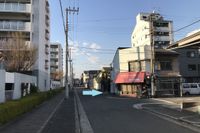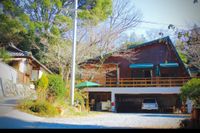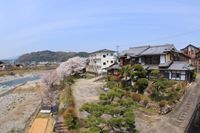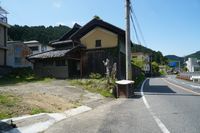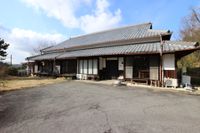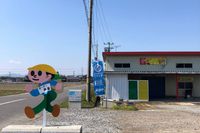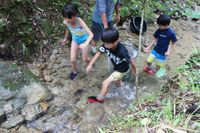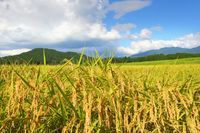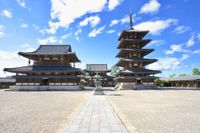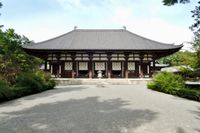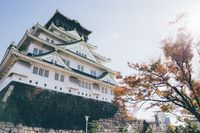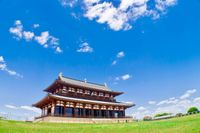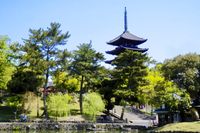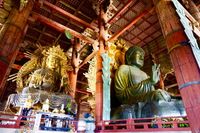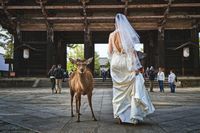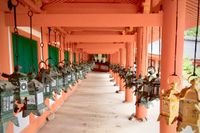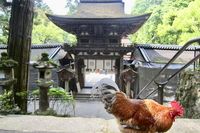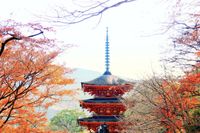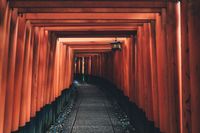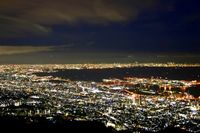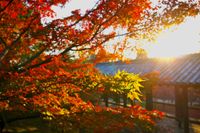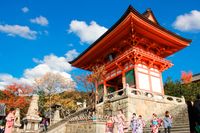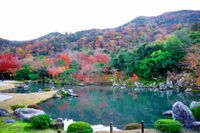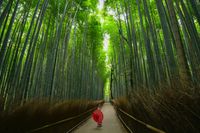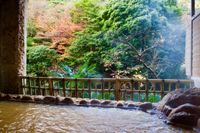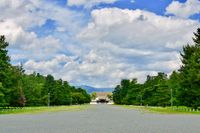Hiraoka Shrine
大阪府/東大阪市

Description
This is a shrine that is said to have been built in 660 BC. The original shrine Gods are known as Amenokoyane no Mikoto, Hime no Omikami, and subsequently the Futsunushi no Kami(Katori Jingu Shrine) and Takemikazuchi no Mikoto (Kashima Shrine) were deified to the shrine, but where then moved to the Kasuga Taisha Shrine. Because of this, the shrine is sometimes known as the "ex-Kasuga shrine". Many important figures of their time such as Taira KiyomoriMinamoto YoshitsuneMinamoto YoritomoAshikaga Takauji and Toyotomi Hideyori visited this shrine, which possesses what is known as "an ancient sanctuary".
Homepage
Address
Nearby Car Night Spots
Shin Meishin Suzuka PA (inbound) RV Station Suzuka * With Power!
¥2,200〜
/ per nightMie Yamamotocho, Suzuka-shi
4.3
(153)Nearby Activities
Catch and eat char in a beautiful valley in the mountains
¥2,000〜
/ per personShiga Fujise, Taga-cho Inukami-gun
3.0
(0)All you can eat rice balls and rice reaping in the rice field in the mountains
¥2,000〜
/ per personShiga Fujise, Taga-cho Inukami-gun
3.0
(0)Ranking Stations
Shin Meishin Suzuka PA (inbound) RV Station Suzuka * With Power!
¥2,200〜
/ per nightMie Yamamotocho, Suzuka-shi
4.3
(153)Nearby Drive Spots
Horyuji Temple
This is a temple built in 607 AD by Prince Shotoku, and is a branch temple of the Shotoku sect head temple. It is registered as a world heritage. The object of worship is known as Shaka Nyorai and during the Sengoku era(1467-1600), was restored by the Toyotomi clan and Tokugawa families, as well as significant restoration between 1934 and 1985. Over a long period of time, it has been restored to its former glory. It is a treasure trove of cultural assets with 17 national treasures and 35 assets of cultural importance.
Toshodaiji Temple
This temple, which was a branch of the main temple of the Rishu sect, was built in 759 AD by Jianzhen (known as Ganjin in Japanese), a Chinese monk who singlehandedly spread the teachings of Buddhism in Japan. The main object of worship is known as Rushana buddha and is registered as a World Heritage Site. The temple is significant in that is preserves the original 8th century Nara Tenpyou culture, and has the golden hall and auditorium that was constructed during the Nara era(710-794). The name comes from the fact that Jianzhen spent his later years at the temple.
Osaka Castle
This is one of Japan's three largest castles built by Toyotomi Hideyoshi in 1583. It was also the scene for the great battle known as "Osaka no Eki", fought between the Toyotomi clan and Tokugawa noble families after the death of Toyotomi Hideyoshi. The current castle tower was built by the Tokugawa family after the death of Toyotomi, and is known as one of the great symbols of Osaka. It is familiar to many people and is known as the "Taikohan Castle".
Heijo Palace
A town built by Empress Genmei in 710 AD, it is a registered world heritage site. The town was created as a capital to practice the law of the land and was 2,500 hectares in size. The model of the city was based on China's city of Choan City. The Suzaku gate and imperial council hall have been restored, allowing visitors to feel the history of the original town.
Kofukuji Temple
This is a temple built in 669 AD by Fujiwara Fuhito, amongst others, and is a branch temple of the Hoso sect main temple. The main object of worship is known as Shaka Nyorai, and is registered as a national treasure. It was considered as one of the four great temples during the Nara period(710-794) and one of the seven major temples during the Heian period(794-1185), and increased in prominence through sharing teachings with Kasuga Taisha Shrine. There are numerous cultural treasures such as the wooden deva king statue.
Todaiji Temple
This temple was built in 741 AD under the instruction of Emperor Shomu, and is a branch temple of the Kegon sect head temple. The temple's buddha statue known as the "Daibutsu of Nara" was built, and became a place of hope and support from Emperor Shomu, during famine, earthquakes and illness of the time. There are many items of cultural importance such as the largest wooden buddhist temple in the world, and is registered as a national heritage site.
Nara Park
Registered as a World Heritage Site, this is a famous deer park. Around 1,200 wild deer inhabit the area, and is popular for feeding the deer with "Deer senbei" (a type of savoury biscuit). The deer is said to be a god of Kasuga Taisha Shrine, which is in the local area, and Takemikazuchi is said to have come to the area from Kashima Jingu Shrine in Ibaraki riding on a deer when the shrine was built.
Kasuga Taisha Shrine
This is a shrine that was built in 768 AD to enshrine the Kasuga gods Nakatomi clan and Fujiwara clan. The Kasuga Gods are known as Takemi Kazuchi no Mikoto(Kashima Jingu Shrine), Futsunushi no Kami(Katori Jingu Shrine), Amenokoyane no Mikoto and Himegami(Hiraoka Shrine). It is the head temple of the Kasuga shrine group, of which there are around 1000 in Japan, and it is said that deer are the underlings to the shrine Gods, from the legend that Takemi Kazuchi no Mikoto rode here on a white deer. It is registered as a World Heritage Site.
Isonokami Jingu Shrine
This is a shrine that was built in 570 AD. It is one of Japan's oldest shrines, housing the great God Futsunomitama no Okami, and was the main temple of the ruler of military family, known as Mononobe clan. Even amongst old faiths, it was known as a particularly distinguished shrine. There are around 40 chickens in the area which are said to be underlings to the shrine gods. If you hear the chickens crying out, it is said to bring good fortune.
Hasedera Temple
This is a temple built by Domyo in 727 AD, and is the branch temple of the Shingon Buzan sect main temple. The object of faith is known as Juichimen Kannnon(11-faced) and is the head temple of the Hasedeta temple group, of which there are around 240 in Japan. As one of Japan's most prominent Kannon sacred sites in Japan, it attracted the faith and reverence of many aristocrats and nobles. Situated in the middle of Mount Hatsuse, in April and March, around 7000 Moutan Peony flowers of 150 varieties bloom in the area, which had led the temple to be also known as the "Flower temple".長谷寺 © w_0705_ クリエイティブコモンズライセンス(表示4.0 国際)https://creativecommons.org/licenses/by/4.0/
Byodoin Temple
This is a temple built in 1052 by Fujiwara Yorimichi and is registered as a World Heritage Site. The main object of worship is known as Amida Nyorai, and displays the luxurious aristocratic culture of Fujiwara clan. In the central island of the pond, there is what is known as the phoenix temple, and it appears as if there is a palace floating in the middle of the pond in a treasure paradise. You can see the phoenix design on 10 yen coins and 10,000 yen notes.
Daigoji Temple
This is a Shingon sect temple built by Shobo in 874 AD, and is a branch temple of Shingon sect head temple. Yakushi Nyorai is the primary object of worship, and the temple is registered as a World Heritage Site. Although it was destroyed during the unrest of the Muromachi Era(1336-1573), it was reconstructed as the stage of a famous play starring the hero Toyotomi Hideyoshi, known as the "Daigo no Hanami". It is also famous for cherry blossom viewing.
Fushimi Inari Taisha Shrine
Built in 711 AD, this shrine is the main central temple of the Inari Shrine group, of which there are about 30,000 in Japan. The main Gods are Ukanomitama no Mikoto , Satahiko no Okami, Omiyanome no Okami, Tanaka no Okami, Shi no Okami, known as the Inari great Gods. The shrine has long been known as a place to pray for wish for abundance, and the countless red/orange Torii gates were built to express the power of abundance of the Inari great shrine God, and is known as the "Thousand Torii gates". It was also the scene for the film "Memoirs of a Geisha".
Mount Rokko
This is a 931 meter tall mountain in north Kobe. The sky observation deck as well as the observation area that looks down into the landscape below is named as one of Japan's three best night views, where one can see Osaka, Seto Inland Sea and Shikoku. This view is also known as "Kobe's 10 million dollar view".
Tofukuji Temple
This is a Rinzai sect temple built in 1236 by Enni, and is a branch temple of Rinzai Tofukuji sect head temple. The main object of worship is Shaka Nyorai, and the name takes one character from the Todaiji Temple and Kofukuji Temples respectively. The oldest gate in Japan is here, which was rebuilt by Ashikaga Yoshimochi in 1425, and is a designated national treasure. In addition from the Tsuten bridge, provides optimum views of the vivid autumn leaves, and is said to be the best autumn leaf viewing spot in Kyoto.
Kiyomizu-dera Temple
This is a Hosso sect temple built by Enchin in 778 AD. The temple is built is reverence to Senju Kannon(1000 Armed) and is registered as a World Heritage Site. There is also a 13 meter high famous hall known as the "Kiyomizu Stage", which was built under the instruction of Tokugawa Iemitsu, where it became the stage for performances such as Gagaku classical music, Noh theatre, Kyogen and Kabuki. The temple can be enjoyed in all four seasons with cherry blossoms, greenery, autumn leaves and snow views during the respective four seasons.
Tenryu-ji Temple
This is a temple built under the instruction of Ashikaga Takauji in 1345, and is a branch temple of Rinzai Tenryu-ji sect head temple. It was built as a place of relaxation for Emperor Godaigo. The main object of worship is Shaka Nyorai, and is registered as a world heritage site. The area is also popular for autumn leaf viewing, as there are amazing views of the Arashiyama autumn leaf trees.
Arashiyama Bamboo Grove
This is a bamboo forest of around 400m in Sagano. This was an area opened by aristocrats and noblemen in the Heian era(794-1185), and this area loved by the upper echelons of society back then still exists today, around 1,000 years later. This symbol of Kyoto brings in many tourists. It is recommended that you visit in early morning or later evening to be able to enjoy at leisure.
Arima Onsen
This is one of Japan's three most famous Onsen in Kobe city. It opened back in 1400, and was loved by Toyotomi Hideyoshi during the Sengoku era(1467-1600), and was known as the greatest Onsen in the Kansai region during the Edo era(1603-1868). The water at the spring is plentiful in iron, and three of the famous baths include the "Gold water", "Silver Water" and a bath known as "Taiko no Yu".※Credit:一般財団法人神戸観光局
Kyoto Imperial Palace
For 500 years between 1392 and 1869, the various generations of emperors lived here, where public ceremonies were held and administration took place. Originally, the place began as a small hall known as "Tsuchimikado Higashi no Toindono", but was expanded by Ashikaga Yoshimitsu, an important Shogun in Japanese history. It was established by Oda Nobunaga and Hideyoshi Toyotomi, to become the place as it is seen today. It ended as a place of government when the Emperor Meiji and royal family moved to Tokyo in 1869, and became open to the public from August 2016.

